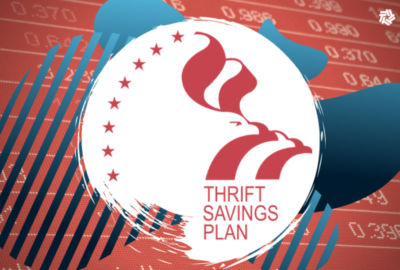TSP will allow participants to take loans during next shutdown
Participants in the Thrift Savings Plan can officially borrow from their own retirement accounts during future government shutdowns.
The Thrift Savings Plan will allow its participants to request a loan during future government shutdowns, giving federal employees a potential option to alleviate some of the immediate financial impacts of a lengthy period of time without pay.
The Federal Retirement Thrift Investment Board (FRTIB), the agency that administers the TSP, said it will allow federal employees who enter “non-pay” status specifically due to a lapse in appropriations to borrow from their retirement accounts. Employees impacted by a government shutdown can take a loan, suspend payments to those loans and begin to pay the loan back when the lapse ends.
This only applies to federal employees who are furloughed or excepted and working without pay during a government shutdown, according to an interim rule the FRTIB published Tuesday. It doesn’t apply to TSP participants who might enter non-pay status for any other reason, such as a voluntary leave of absence or seasonal work.
“[That] is wholly different from the people who are affected by a lapse in appropriations,” Kim Weaver, director of external affairs for the FRTIB, said. “[A lapse] could last a day or it could last for 35 days, as we recently saw.”
The prolonged nature of the last government shutdown is what ultimately prompted the FRTIB to write an interim rule allowing participants to borrow from their own retirement accounts.
Under previous regulations, the TSP agency had to report loans to the IRS as taxable income subject to a 10 percent penalty if a participant missed a certain number of loan payments. Because the TSP uses mostly automated technology to accept loan payments through payroll deductions — and the agency can’t automatically accept payments if participants are receiving a paycheck — federal employees must be in “pay status” to be eligible for a loan.
The FRTIB updated regulations with an interim rule so the agency could implement the change immediately — rather than go through the proposed rule making process. The TSP is accepting public comments and will consider them before publishing a final rule, but the agency considers the current situation to be an “emergency” one.
The government may shutdown again if Congress and the White House fail to reach an agreement on a permanent or temporary funding solution by Feb. 15, a point the FRTIB made in explaining its reasoning for the interim rule.
FRTIB staff has designed manual workarounds to what are typically automated business processes, making the interim rule effective immediately so participants will have access to TSP loans if the government shuts down again.
Still, the FRTIB emphasized the TSP isn’t a replacement for federal employees’ salaries.
“A TSP loan is not a cost-less alternative to paying federal employees for their work,” the interim rule reads. “TSP participants who take loans may miss out on the investment earnings that would have accrued if that money had remained [in] their retirement accounts. A TSP loan will still have to be repaid in order to avoid the loan being declared a taxable distribution. Nevertheless, the FRTIB is publishing this interim rule in the hopes that it might provide some assistance to TSP participants in the event of another government shutdown.”
The FRTIB will post details on the TSP website late next week detailing how participants can request and apply for a loan in the event of a government shutdown, Weaver said.
She said the FRTIB worked with the IRS, as well as the Office of Management and Budget and Office of Personnel Management, to work out the details of the regulatory change. The IRS in particular was helpful in interpreting tax statute and law, Weaver said.
The FRTIB’s interim rule comes on the heels of several proposals from members of Congress, which offer a variety of proposals that would allow TSP participants to take a hardship withdrawal during a government shutdown.
The proposed bills all differ, but they all would generally let federal employees withdraw from their TSP accounts without incurring a 10 percent early withdrawal penalty tax and would allow them to repay the hardship loan.
The FRTIB has said it sees an opportunity to potentially extend the same provisions it allows for federal employees impacted by a presidentially-declared natural disaster to take hardship withdrawals without major penalty.
Weaver said the agency is still working with congressional staffers to work out the details and make changes to proposed legislation.
“What we never want to happen is for a bill to pass, and we’re not able to implement it, especially in a timely way,” she said.
Copyright © 2025 Federal News Network. All rights reserved. This website is not intended for users located within the European Economic Area.
Nicole Ogrysko is a reporter for Federal News Network focusing on the federal workforce and federal pay and benefits.
Follow @nogryskoWFED






